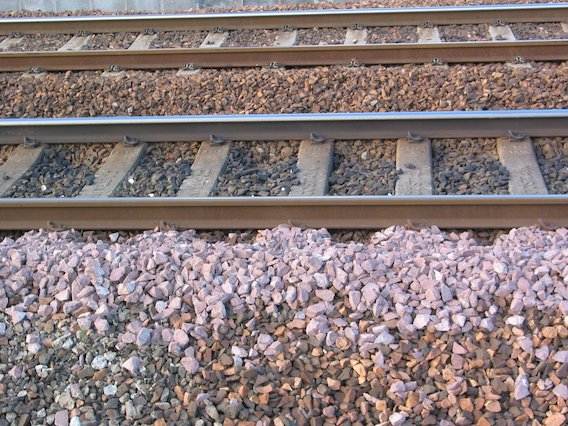Ballast
Summary: Ballast provides a stable foundation for the track, and creates a prototypical appearance.
Ballast is aggregate which provides a base for the track. This allows the track to contract and expand with changing weather conditions, while keeping the track in place and providing drainage. In real railroads, ballast must provide a stable, raised foundation for the track which must carry a heavy load and various forces resulting from the movement of the train. Ballast is also used to level uneven terrain. Part of the track maintenance includes replacing and cleaning the ballast. (See Pentrex's Working on the Railroad DVD for more on track maintenance.)
On our scale railroads ballast serves the same basic functions. Indoors, ballast is used to fix the track in place and give the appearance of real track. The track is affixed to cork or foam roadbed to provide the correct profile, and ballast made of stone or the crushed nut shells is applied and fixed in place.
It is important to remove any metallic debris from the ballast to avoid short circuits. A magnet can be used to remove ferrous metals, but others such as copper an aluminum will remain. Commercial ballast should have been processed to remove any metal fragments. Also, during the process of fixing the ballast with glue, the result may be conductive until it dries and the water has evaporated.
In some outdoor large scale installations, track is fixed to a sub foundation (wood, concrete, etc.) and the ballast is decorative in nature. Outdoors, over time, our scale ballast tends to wash away and must be replaced.

